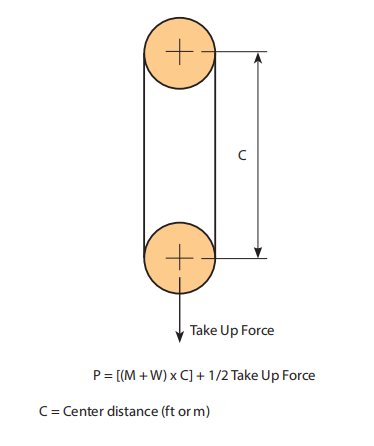Introduction
A careful assessment from the disorders surrounding a conveyor is critical for precise conveyor chain assortment. This area discusses the fundamental concerns required for productive conveyor chain variety. Roller Chains tend to be utilized for light to reasonable duty material handling applications. Environmental ailments could demand the usage of particular products, platings coatings, lubricants or the skill to operate with no supplemental external lubrication.
Essential Info Expected For Chain Selection
? Type of chain conveyor (unit or bulk) including the process of conveyance (attachments, buckets, via rods and so on).
? Conveyor layout which include sprocket places, inclines (if any) and the number of chain strands (N) for being utilised.
? Amount of material (M in lbs/ft or kN/m) and type of materials to be conveyed.
? Estimated excess weight of conveyor elements (W in lbs/ft or kN/m) such as chain, slats or attachments (if any).
? Linear chain velocity (S in ft/min or m/min).
? Environment through which the chain will operate including temperature, corrosion circumstance, lubrication ailment etc.
Stage one: Estimate Chain Stress
Make use of the formula beneath to estimate the conveyor Pull (Pest) after which the chain stress (Check). Pest = (M + W) x f x SF and
Test = Pest / N
f = Coefficient of Friction
SF = Velocity Aspect
Stage two: Make a Tentative Chain Assortment
Applying the Test worth, produce a tentative selection by choosing a chain
whose rated doing work load greater compared to the calculated Check value.These values are suitable for conveyor services and are diff erent from these proven in tables in the front with the catalog which are linked to slow speed drive chain utilization.
Additionally to suffi cient load carrying capability usually these chains must be of a specific pitch to accommodate a preferred attachment spacing. By way of example if slats are to get bolted to an attachment every 1.5 inches, the pitch on the chain picked will have to divide into 1.5?¡À. Hence one could use a 40 chain (1/2?¡À pitch) with all the attachments every single 3rd, a 60 chain (3/4?¡À pitch) with all the attachments every 2nd, a 120 chain (1-1/2?¡À pitch) with the attachments every pitch or a  C2060H chain (1-1/2?¡À pitch) with the attachments just about every pitch.
C2060H chain (1-1/2?¡À pitch) with the attachments just about every pitch.
Phase 3: Finalize Choice – Determine Real Conveyor Pull
Following making a tentative selection we have to verify it by calculating
the real chain stress (T). To perform this we should fi rst determine the actual conveyor pull (P). From the layouts proven around the proper side of this page choose the ideal formula and determine the total conveyor pull. Note that some conveyors could possibly be a blend of horizontal, inclined and vertical . . . in that case determine the conveyor Pull at every part and add them with each other.
Step 4: Determine Optimum Chain Tension
The utmost Chain Tension (T) equals the Conveyor Pull (P) as calculated in Stage three divided from the amount of strands carrying the load (N), times the Speed Issue (SF) proven in Table two, the Multi-Strand Aspect (MSF) proven in Table 3 plus the Temperature Element (TF) proven in Table four.
T = (P / N) x MSF x SF x TF
Step five: Examine the ?¡ãRated Operating Load?¡À in the Chosen Chain
The ?¡ãRated Operating Load?¡À of the selected chain should be better than the Greatest Chain Tension (T) calculated in Stage 4 above. These values are acceptable for conveyor service and therefore are diff erent from individuals shown in tables in the front on the catalog which are related to slow pace drive chain utilization.
Stage 6: Check the ?¡ãAllowable Roller Load?¡À of your Chosen Chain
For chains that roll over the chain rollers or on top roller attachments it really is necessary to verify the Allowable Roller Load?¡À.
Note: the Roller load is determined by:
Roller Load = Wr / Nr
Wr = The total bodyweight carried from the rollers
Nr = The amount of rollers supporting the excess weight.
